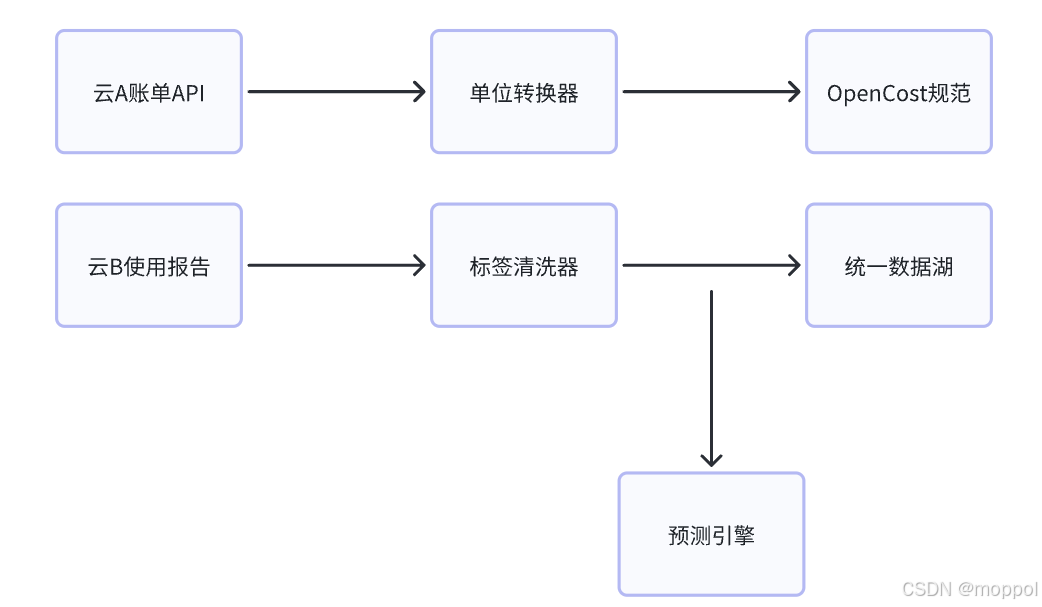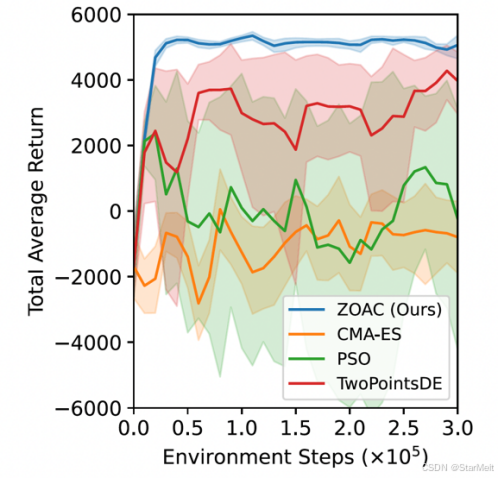Stephen Wolfram:让 ChatGPT 真正起作用的是什么?
What Really Lets ChatGPT Work?
让 ChatGPT 真正起作用的是什么?
Human language—and the processes of thinking involved in generating it—have always seemed to represent a kind of pinnacle of complexity. And indeed it’s seemed somewhat remarkable that human brains—with their network of a “mere” 100 billion or so neurons (and maybe 100 trillion connections) could be responsible for it. Perhaps, one might have imagined, there’s something more to brains than their networks of neurons—like some new layer of undiscovered physics. But now with ChatGPT we’ve got an important new piece of information: we know that a pure, artificial neural network with about as many connections as brains have neurons is capable of doing a surprisingly good job of generating human language.
人类的语言——以及生成它所涉及的思考过程——一直似乎代表着某种复杂性的巅峰。实际上,人类大脑——其网络仅包含大约 1000 亿左右的神经元(以及可能的 100 万亿连接)能够负责它,似乎是相当令人惊讶的。或许,人们可能会想象,大脑比其神经元网络还有更多的内容——比如某种尚未被发现的新的物理层面。但现在,有了 ChatGPT,我们得到了一个重要的新信息:我们知道一个纯粹的、人工的神经网络,其连接数量大约与大脑的神经元数量相当,能够非常好地生成人类语言。
And, yes, that’s still a big and complicated system—with about as many neural net weights as there are words of text currently available out there in the world. But at some level it still seems difficult to believe that all the richness of language and the things it can talk about can be encapsulated in such a finite system. Part of what’s going on is no doubt a reflection of the ubiquitous phenomenon (that first became evident in the example of rule 30) that computational processes can in effect greatly amplify the apparent complexity of systems even when their underlying rules are simple. But, actually, as we discussed above, neural nets of the kind used in ChatGPT tend to be specifically constructed to restrict the effect of this phenomenon—and the computational irreducibility associated with it—in the interest of making their training more accessible.
是的,这仍然是一个庞大而复杂的系统,其神经网络权重数量与目前世界上可获取的文本字数相当。但在某种程度上,我们仍然很难相信所有丰富的语言及其能够表达的事物可以被封装在如此有限的系统中。在很大程度上,这无疑反映了计算过程可以在其基本规则简单的情况下极大地放大系统复杂性的普遍现象(这一现象最早在规则 30 的例子中显现出来)。然而,实际上,正如我们上面所讨论的,ChatGPT 中使用的神经网络类型往往是专门构建的,以限制这种现象及与之相关的计算不可约性,以便使它们的训练更容易进行。
So how is it, then, that something like ChatGPT can get as far as it does with language? The basic answer, I think, is that language is at a fundamental level somehow simpler than it seems. And this means that ChatGPT—even with its ultimately straightforward neural net structure—is successfully able to “capture the essence” of human language and the thinking behind it. And moreover, in its training, ChatGPT has somehow “implicitly discovered” whatever regularities in language (and thinking) make this possible.
那么,像 ChatGPT 这样的系统如何在语言方面取得如此进展呢?我认为,基本答案是,从根本上讲,语言实际上比它看起来更简单。这意味着 ChatGPT,即使其神经网络结构非常直接,也能成功地“捕捉到”人类语言及其背后思维的本质。而且,在训练过程中,ChatGPT 以某种方式“隐含地发现”了语言(和思维)中使这一切成为可能的规律。
The success of ChatGPT is, I think, giving us evidence of a fundamental and important piece of science: it’s suggesting that we can expect there to be major new “laws of language”—and effectively “laws of thought”—out there to discover. In ChatGPT—built as it is as a neural net—those laws are at best implicit. But if we could somehow make the laws explicit, there’s the potential to do the kinds of things ChatGPT does in vastly more direct, efficient—and transparent—ways.
我认为,ChatGPT 的成功为我们提供了一项关于基础科学的重要证据:它表明我们可以期待发现全新的“语言规律”以及实际上的“思维规律”。在作为神经网络构建的 ChatGPT 中,这些规律充其量只是隐含的。但是,如果我们能以某种方式让这些规律显式化,那么有可能以更直接、更高效且更透明的方式完成类似 ChatGPT 的事情。
But, OK, so what might these laws be like? Ultimately they must give us some kind of prescription for how language—and the things we say with it—are put together. Later we’ll discuss how “looking inside ChatGPT” may be able to give us some hints about this, and how what we know from building computational language suggests a path forward. But first let’s discuss two long-known examples of what amount to “laws of language”—and how they relate to the operation of ChatGPT.
那么,这些规律可能是什么样的呢?从根本上讲,它们必须为我们提供关于语言及其所表达内容的组织方式的某种指导。稍后我们将讨论如何“观察 ChatGPT 内部”以获取关于这方面的一些线索,以及我们从构建计算语言中所了解到的推动这一进程的途径。但首先,让我们讨论两个长期以来已知的“语言规律”的例子以及它们与 ChatGPT 运作的关系。
The first is the syntax of language. Language is not just a random jumble of words. Instead, there are (fairly) definite grammatical rules for how words of different kinds can be put together: in English, for example, nouns can be preceded by adjectives and followed by verbs, but typically two nouns can’t be right next to each other. Such grammatical structure can (at least approximately) be captured by a set of rules that define how what amount to “parse trees” can be put together:
首先是语言的语法。语言并非随机的词汇混合体。相反,有(相当)明确的语法规则来规定不同类型的词汇如何组合:例如在英语中,名词可以被形容词修饰并跟在动词后面,但通常两个名词不能紧挨在一起。这种语法结构可以(至少近似地)通过一组规则来捕捉,这些规则定义了如何组合起“解析树”:

ChatGPT doesn’t have any explicit “knowledge” of such rules. But somehow in its training it implicitly “discovers” them—and then seems to be good at following them. So how does this work? At a “big picture” level it’s not clear. But to get some insight it’s perhaps instructive to look at a much simpler example.
ChatGPT 并没有关于这些规则的显式“知识”。但是在训练过程中,它以某种方式隐含地“发现”了这些规则,并且似乎很擅长遵循它们。那么这是如何实现的呢?从“大局”的层面上来看,这还不清楚。但是,为了获得一些启示,也许可以参考一个更简单的例子。
Consider a “language” formed from sequences of (’s and )’s, with a grammar that specifies that parentheses should always be balanced, as represented by a parse tree like:
考虑一种由序列('s 和 )'s 组成的“语言”,其语法规定括号应始终保持平衡,如下面的解析树所示:

Can we train a neural net to produce “grammatically correct” parenthesis sequences? There are various ways to handle sequences in neural nets, but let’s use transformer nets, as ChatGPT does. And given a simple transformer net, we can start feeding it grammatically correct parenthesis sequences as training examples. A subtlety (which actually also appears in ChatGPT’s generation of human language) is that in addition to our “content tokens” (here “(” and “)”) we have to include an “End” token, that’s generated to indicate that the output shouldn’t continue any further (i.e. for ChatGPT, that one’s reached the “end of the story”).
我们能否训练神经网络生成“语法正确”的括号序列呢?在神经网络中处理序列有多种方法,但是让我们使用 ChatGPT 所使用的转换器网络。给定一个简单的转换器网络,我们可以开始用语法正确的括号序列作为训练示例。一个微妙之处(实际上也出现在 ChatGPT 生成人类语言中)是除了我们的“内容标记”(这里是“(”和“)”)之外,我们还需要包括一个“结束”标记,该标记生成表示输出不应再继续(也就是说,对于 ChatGPT 来说,它已经达到了“故事的结尾”)。
If we set up a transformer net with just one attention block with 8 heads and feature vectors of length 128 (ChatGPT also uses feature vectors of length 128, but has 96 attention blocks, each with 96 heads) then it doesn’t seem possible to get it to learn much about parenthesis language. But with 2 attention blocks, the learning process seems to converge—at least after 10 million or so examples have been given (and, as is common with transformer nets, showing yet more examples just seems to degrade its performance).
如果我们设置一个转换器网络,其中只有一个具有 8 个头部和长度为 128 的特征向量的注意力块(ChatGPT 也使用长度为 128 的特征向量,但具有 96 个注意力块,每个块有 96 个头部),那么似乎不可能让它学习到关于括号语言的知识。但是,对于两个注意力块,学习过程似乎在给出大约一千万个示例后收敛(正如转换器网络中常见的情况,再展示更多示例似乎只会降低其性能)。
So with this network, we can do the analog of what ChatGPT does, and ask for probabilities for what the next token should be—in a parenthesis sequence:
因此,对于这个网络,我们可以做类似于 ChatGPT 所做的事情,询问在括号序列中下一个标记的概率:

And in the first case, the network is “pretty sure” that the sequence can’t end here—which is good, because if it did, the parentheses would be left unbalanced. In the second case, however, it “correctly recognizes” that the sequence can end here, though it also “points out” that it’s possible to “start again”, putting down a “(”, presumably with a “)” to follow. But, oops, even with its 400,000 or so laboriously trained weights, it says there’s a 15% probability to have “)” as the next token—which isn’t right, because that would necessarily lead to an unbalanced parenthesis.
在第一个例子中,网络“非常确定”序列不能在这里结束,这是很好的,因为如果序列在这里结束,那么括号将会不平衡。然而,在第二个例子中,它“正确地识别出”序列可以在这里结束,尽管它也“指出”可以“重新开始”,放下一个“(”,然后紧跟着一个“)”。但是,哎呀,即使经过 40 万个辛苦训练的权重,它还是认为下一个标记为“)”的概率有 15%,这是错误的,因为这将不可避免地导致括号不平衡。
Here’s what we get if we ask the network for the highest-probability completions for progressively longer sequences of (’s:
如果我们要求网络为逐渐变长的('s 序列提供最高概率的补全,我们将得到什么结果呢:

And, yes, up to a certain length the network does just fine. But then it starts failing. It’s a pretty typical kind of thing to see in a “precise” situation like this with a neural net (or with machine learning in general). Cases that a human “can solve in a glance” the neural net can solve too. But cases that require doing something “more algorithmic” (e.g. explicitly counting parentheses to see if they’re closed) the neural net tends to somehow be “too computationally shallow” to reliably do. (By the way, even the full current ChatGPT has a hard time correctly matching parentheses in long sequences.)
是的,到一定长度时,网络表现得很好。但是随后它开始失败。在神经网络(或一般的机器学习)中处理这种“精确”的情况时,这是一种非常典型的现象。人类“一眼就能解决”的案例,神经网络也能解决。但是,需要做一些“更具算法性”的情况(例如明确计算括号以查看它们是否已关闭),神经网络往往在某种程度上“计算能力不足”以可靠地实现。(顺便说一下,即使是目前功能齐全的 ChatGPT,在处理长序列中的括号匹配方面也很困难。)
So what does this mean for things like ChatGPT and the syntax of a language like English? The parenthesis language is “austere”—and much more of an “algorithmic story”. But in English it’s much more realistic to be able to “guess” what’s grammatically going to fit on the basis of local choices of words and other hints. And, yes, the neural net is much better at this—even though perhaps it might miss some “formally correct” case that, well, humans might miss as well. But the main point is that the fact that there’s an overall syntactic structure to the language—with all the regularity that implies—in a sense limits “how much” the neural net has to learn. And a key “natural-science-like” observation is that the transformer architecture of neural nets like the one in ChatGPT seems to successfully be able to learn the kind of nested-tree-like syntactic structure that seems to exist (at least in some approximation) in all human languages.
那么,这对于诸如 ChatGPT 之类的事物以及像英语这样的语言语法意味着什么呢?括号语言是“简朴的”,并且更具有“算法性”。但在英语中,基于单词的局部选择和其他提示来“猜测”什么是在语法上合适的可能更为现实。是的,神经网络在这方面做得更好,尽管可能会错过一些“正式正确”的情况。嗯,人类也可能会错过。但是,要点是语言具有整体句法结构的事实——以及所有这些结构所暗示的规律性——从某种意义上限制了神经网络需要学习的“程度”。一个关键的“自然科学观察”是,像 ChatGPT 中的神经网络这样的转换器架构似乎能够成功地学习嵌套树状句法结构,这种结构似乎(至少在某种程度上)存在于所有人类语言中。
Syntax provides one kind of constraint on language. But there are clearly more. A sentence like “Inquisitive electrons eat blue theories for fish” is grammatically correct but isn’t something one would normally expect to say, and wouldn’t be considered a success if ChatGPT generated it—because, well, with the normal meanings for the words in it, it’s basically meaningless.
句法为语言提供了一种约束。但是显然还有更多。像“好奇的电子吃蓝色理论为鱼”的句子在语法上是正确的,但不是人们通常会说的内容,如果 ChatGPT 生成了这样的句子,也不会被认为是成功的——因为,嗯,用其中的词的正常含义来说,这基本上是毫无意义的。
But is there a general way to tell if a sentence is meaningful? There’s no traditional overall theory for that. But it’s something that one can think of ChatGPT as having implicitly “developed a theory for” after being trained with billions of (presumably meaningful) sentences from the web, etc.
但是,有没有一种通用的方法来判断一个句子是否有意义呢?没有传统的整体理论可以解释这一点。但这是我们可以将 ChatGPT 视为在经过数十亿来自网络等的(可能有意义的)句子训练之后隐含地“发展出理论”的事物。
What might this theory be like? Well, there’s one tiny corner that’s basically been known for two millennia, and that’s logic. And certainly in the syllogistic form in which Aristotle discovered it, logic is basically a way of saying that sentences that follow certain patterns are reasonable, while others are not. Thus, for example, it’s reasonable to say “All X are Y. This is not Y, so it’s not an X” (as in “All fishes are blue. This is not blue, so it’s not a fish.”). And just as one can somewhat whimsically imagine that Aristotle discovered syllogistic logic by going (“machine-learning-style”) through lots of examples of rhetoric, so too one can imagine that in the training of ChatGPT it will have been able to “discover syllogistic logic” by looking at lots of text on the web, etc. (And, yes, while one can therefore expect ChatGPT to produce text that contains “correct inferences” based on things like syllogistic logic, it’s a quite different story when it comes to more sophisticated formal logic—and I think one can expect it to fail here for the same kind of reasons it fails in parenthesis matching.)
这种理论可能是什么样的呢?嗯,有一个小角落基本上已经为人所知两千年了,那就是逻辑。当然,在亚里士多德发现的三段论形式中,逻辑基本上是一种说法,即遵循某些模式的句子是合理的,而其他句子则不合理。因此,例如,合理的说法是“所有 X 都是 Y,这不是 Y,所以它不是 X”(如“所有鱼都是蓝色的。这不是蓝色的,所以它不是鱼。”)。正如人们可以想象亚里士多德通过大量修辞例子(“机器学习风格”)发现三段论逻辑一样,我们也可以想象,在 ChatGPT 的训练过程中,它可以通过查看大量的网页文本等来“发现三段论逻辑”。(是的,尽管人们因此可以期望 ChatGPT 生成基于诸如三段论逻辑之类的事物的“正确推论”的文本,但在更复杂数学逻辑方面,情况完全不同——我认为它在这方面的失败原因与在括号匹配中的失败原因相同。)
But beyond the narrow example of logic, what can be said about how to systematically construct (or recognize) even plausibly meaningful text? Yes, there are things like Mad Libs that use very specific “phrasal templates”. But somehow ChatGPT implicitly has a much more general way to do it. And perhaps there’s nothing to be said about how it can be done beyond “somehow it happens when you have 175 billion neural net weights”. But I strongly suspect that there’s a much simpler and stronger story.
但是除了逻辑这个狭义的例子之外,关于如何系统地构建(或识别)甚至看似有意义的文本还能说些什么呢?是的,有像疯狂填词游戏这样的东西,它们使用非常具体的“短语模板”。但是,ChatGPT 隐含地具有一种更加通用的方法来实现这一点。也许关于如何做到这一点,除了“当你拥有 1750 亿个神经网络权重时,不知何故就会发生这种情况”之外,没有别的可说的。但我强烈怀疑还有一个更简单、更有力的故事。

“点赞有美意,赞赏是鼓励”
相关文章:

Stephen Wolfram:让 ChatGPT 真正起作用的是什么?
What Really Lets ChatGPT Work? 让 ChatGPT 真正起作用的是什么? Human language—and the processes of thinking involved in generating it—have always seemed to represent a kind of pinnacle of complexity. And indeed it’s seemed somewhat remarkabl…...

CTF-Flask-Jinja2(持续更新)
放心,我会一直陪着你 一.知识一.在终端的一些指令1.虚拟环境2.docker容器二.SSTI相关知识介绍1.魔术方法2.python如何执行cmd命令3.SSTI常用注入模块(1)文件读取(2)内建函数eval执行命令(3)os模块执行命令(4)importlib类执行命令(5)linecache函数执行命令(6)subproc…...

linux文件I/O之 fcntl() 函数用法:设置文件的 flags、设置文件锁(记录锁)
头文件和函数声明 #include <unistd.h> #include <fcntl.h> int fcntl(int fd, int cmd, ... /* arg */ ); 函数功能 获取、设置已打开文件的属性 返回值 成功时返回根据 cmd 传递的命令类型的执行结,失败时返回 -1,并设置 errno 为相…...
)
黑马项目一完结后阶段面试45题 JavaSE基础部分20题(一)
一、Java数据类型 基本数据类型——四类八种 整数型 byte short int long 浮点型 float double 字符型 char 布尔型 boolean 引用数据类型 String字符串 类(对象) 接口类型 数组类型 枚举类型 二、面向对象的三大特性 1.封装 把同一类事物…...

(一)创建型设计模式:3、建造者模式(Builder Pattern)
目录 1、建造者模式含义 2、建造者模式的讲解 3、使用C实现建造者模式的实例 4、建造者模式的优缺点 5、建造者模式VS工厂模式 1、建造者模式含义 The intent of the Builder design pattern is to separate the construction of a complex object from its representatio…...

指针进阶大冒险:解锁C语言中的奇妙世界!
目录 引言 第一阶段:🔍 独特的字符指针 什么是字符指针? 字符指针的用途 演示:使用字符指针拷贝字符串 字符指针与字符串常量 小试牛刀 第二阶段:🎯 玩转指针数组 指针数组是什么? 指针…...

2.0 Maven基础
1. Maven概述 Maven概念 Apache Maven是一个软件项目管理工具,将项目开发和管理过程抽象程一个项目对象模型(POM,Project Object Model)。 Maven作用 项目构建 提供标准的、跨平台的自动化项目构建方式。 依赖管理 方便快捷…...

在Linux虚拟机内配置nginx以及docker
目录 1、nginx源码包编译以及安装依赖 1、配置安装所需的编译环境 2、安装函数库(pcre、zlib、openssl) 2、安装nginx 1、获取源码包 2、解压编译 3、启动nginx服务 1、关闭防火墙 2、运行nginx 3、使用本地浏览器进行验证 3、安装docker 1、…...

数据结构-带头双向循环链表的实现
前言 带头双向循环链表是一种重要的数据结构,它的结构是很完美的,它弥补了单链表的许多不足,让我们一起来了解一下它是如何实现的吧! 1.节点的结构 它的节点中存储着数据和两个指针,一个指针_prev用来记录前一个节点…...

android Ndk Jni动态注册方式以及静态注册
目录 一.静态注册方式 二.动态注册方式 三.源代码 一.静态注册方式 1.项目名\app\src\main下新建一个jni目录 2.在jni目录下,再新建一个Android.mk文件 写入以下配置 LOCAL_PATH := $(call my-dir)//获取当前Android.mk所在目录 inclu...

MySQL中的索引
1.2.MySQL中的索引 InnoDB存储引擎支持以下几种常见的索引:B树索引、全文索引、哈希索引,其中比较关键的是B树索引 1.2.1.B树索引 InnoDB中的索引自然也是按照B树来组织的,前面我们说过B树的叶子节点用来放数据的,但是放什么数…...

idea中如何处理飘红提示
idea中如何处理飘红提示 在写sql时,总是会提示各种错误 查找资料,大部分都是说关提示,这里把错误提示选择为None即可 关掉以后,也确实不显示任何提示了,但总有一种掩耳盗铃的感觉 这个sms表明明存在,但是还…...

Elasticsearch使用中出现的错误
Elasticsearch使用中出现的错误 1、分页查询异常 在分页的过程中出现了一个问题是当查询的数据超过10000条的时候报了异常: from size must be less than or equal to: [10000]这个问题最快捷的解决方式是增大窗口大小: curl -XPUT http://127.0.0.…...

【IMX6ULL驱动开发学习】01.编写第一个hello驱动+自动创建设备节点(不涉及硬件操作)
目录 一、驱动程序编写流程 二、代码编写 2.1 驱动程序hello_drv.c 2.2 测试程序 2.3 编写驱动程序的Makefile 三、上机实验 3.1 NFS 挂载 3.2 测试示例 一、驱动程序编写流程 构造file_operations结构体 在里面填充open/read/write/ioctl成员 注册file_operations结…...

决策规划仿真平台搭建
决策规划仿真平台搭建 自动驾驶决策规划算法第二章第一节 决策规划仿真平台搭建 这部分的主要难点在于多个软件的连通与适配,环境的搭建总是折磨人的,主要是 4 个软件,各软件版本如下 Visual Studio2017PreScan8.5.0CarSim2019.0MATLAB2019b…...

计算图像哈希SHA-512
1、MATLAB实现 计算图像哈希值SHA-512,在文献[1]提到的算法如下: % Example Code: Create an MD5 crypto-hash of an arbitrary string, "str" % Main class of interest: System.Security.Cryptography.HashAlgorithm% Example String to hash with MD5 %…...

Android之消除APP图标的白色边框
有问题的效果: 解决方案: 第一步:app右键—>new—>Image Asset 第二步:上传Logo图标,选择每种分辨率,预览看效果,选择Resize,可以微调 第三步:点击 Nextÿ…...

java线程的优先级、守护线程的概念
1.线程的调度 抢占式调度 非抢占式调度 1.1 抢占式调度 优先级越高,抢到cpu的概率越高 1.2 守护线程 守护线程,非守护线程。当其他的非守护线程执行完毕以后,守护线程会陆续结束。 守护线程的应用场景...

asp.net core 6.0 efcore +sqlserver增删改查的demo
asp.net core 6.0 efcore sqlserver增删改查的demo 下面是一个使用ASP.NET Core 5.0和Entity Framework Core进行增删改查操作的示例。 首先,创建一个空的ASP.NET Core 6.0 Web应用程序项目。 然后,安装以下NuGet包: Microsoft.EntityFra…...

HC32L110B6芯片测试
到货之后,直观上感觉的确很小,小包装盒里面还装了说明书。 下载器单独在一个盒里面,但是这个T-U2T没用上,还是用的STLINK。 开发之前先去网上找了一些别人遇到的坑,的确不少。 涉及的方面也是挺全的,供电、…...

多云管理“拦路虎”:深入解析网络互联、身份同步与成本可视化的技术复杂度
一、引言:多云环境的技术复杂性本质 企业采用多云策略已从技术选型升维至生存刚需。当业务系统分散部署在多个云平台时,基础设施的技术债呈现指数级积累。网络连接、身份认证、成本管理这三大核心挑战相互嵌套:跨云网络构建数据…...

突破不可导策略的训练难题:零阶优化与强化学习的深度嵌合
强化学习(Reinforcement Learning, RL)是工业领域智能控制的重要方法。它的基本原理是将最优控制问题建模为马尔可夫决策过程,然后使用强化学习的Actor-Critic机制(中文译作“知行互动”机制),逐步迭代求解…...

反向工程与模型迁移:打造未来商品详情API的可持续创新体系
在电商行业蓬勃发展的当下,商品详情API作为连接电商平台与开发者、商家及用户的关键纽带,其重要性日益凸显。传统商品详情API主要聚焦于商品基本信息(如名称、价格、库存等)的获取与展示,已难以满足市场对个性化、智能…...

java调用dll出现unsatisfiedLinkError以及JNA和JNI的区别
UnsatisfiedLinkError 在对接硬件设备中,我们会遇到使用 java 调用 dll文件 的情况,此时大概率出现UnsatisfiedLinkError链接错误,原因可能有如下几种 类名错误包名错误方法名参数错误使用 JNI 协议调用,结果 dll 未实现 JNI 协…...
)
论文解读:交大港大上海AI Lab开源论文 | 宇树机器人多姿态起立控制强化学习框架(一)
宇树机器人多姿态起立控制强化学习框架论文解析 论文解读:交大&港大&上海AI Lab开源论文 | 宇树机器人多姿态起立控制强化学习框架(一) 论文解读:交大&港大&上海AI Lab开源论文 | 宇树机器人多姿态起立控制强化…...

DeepSeek 技术赋能无人农场协同作业:用 AI 重构农田管理 “神经网”
目录 一、引言二、DeepSeek 技术大揭秘2.1 核心架构解析2.2 关键技术剖析 三、智能农业无人农场协同作业现状3.1 发展现状概述3.2 协同作业模式介绍 四、DeepSeek 的 “农场奇妙游”4.1 数据处理与分析4.2 作物生长监测与预测4.3 病虫害防治4.4 农机协同作业调度 五、实际案例大…...

docker 部署发现spring.profiles.active 问题
报错: org.springframework.boot.context.config.InvalidConfigDataPropertyException: Property spring.profiles.active imported from location class path resource [application-test.yml] is invalid in a profile specific resource [origin: class path re…...

AirSim/Cosys-AirSim 游戏开发(四)外部固定位置监控相机
这个博客介绍了如何通过 settings.json 文件添加一个无人机外的 固定位置监控相机,因为在使用过程中发现 Airsim 对外部监控相机的描述模糊,而 Cosys-Airsim 在官方文档中没有提供外部监控相机设置,最后在源码示例中找到了,所以感…...
提供了哪些便利?)
现有的 Redis 分布式锁库(如 Redisson)提供了哪些便利?
现有的 Redis 分布式锁库(如 Redisson)相比于开发者自己基于 Redis 命令(如 SETNX, EXPIRE, DEL)手动实现分布式锁,提供了巨大的便利性和健壮性。主要体现在以下几个方面: 原子性保证 (Atomicity)ÿ…...

通过MicroSip配置自己的freeswitch服务器进行调试记录
之前用docker安装的freeswitch的,启动是正常的, 但用下面的Microsip连接不上 主要原因有可能一下几个 1、通过下面命令可以看 [rootlocalhost default]# docker exec -it freeswitch fs_cli -x "sofia status profile internal"Name …...
